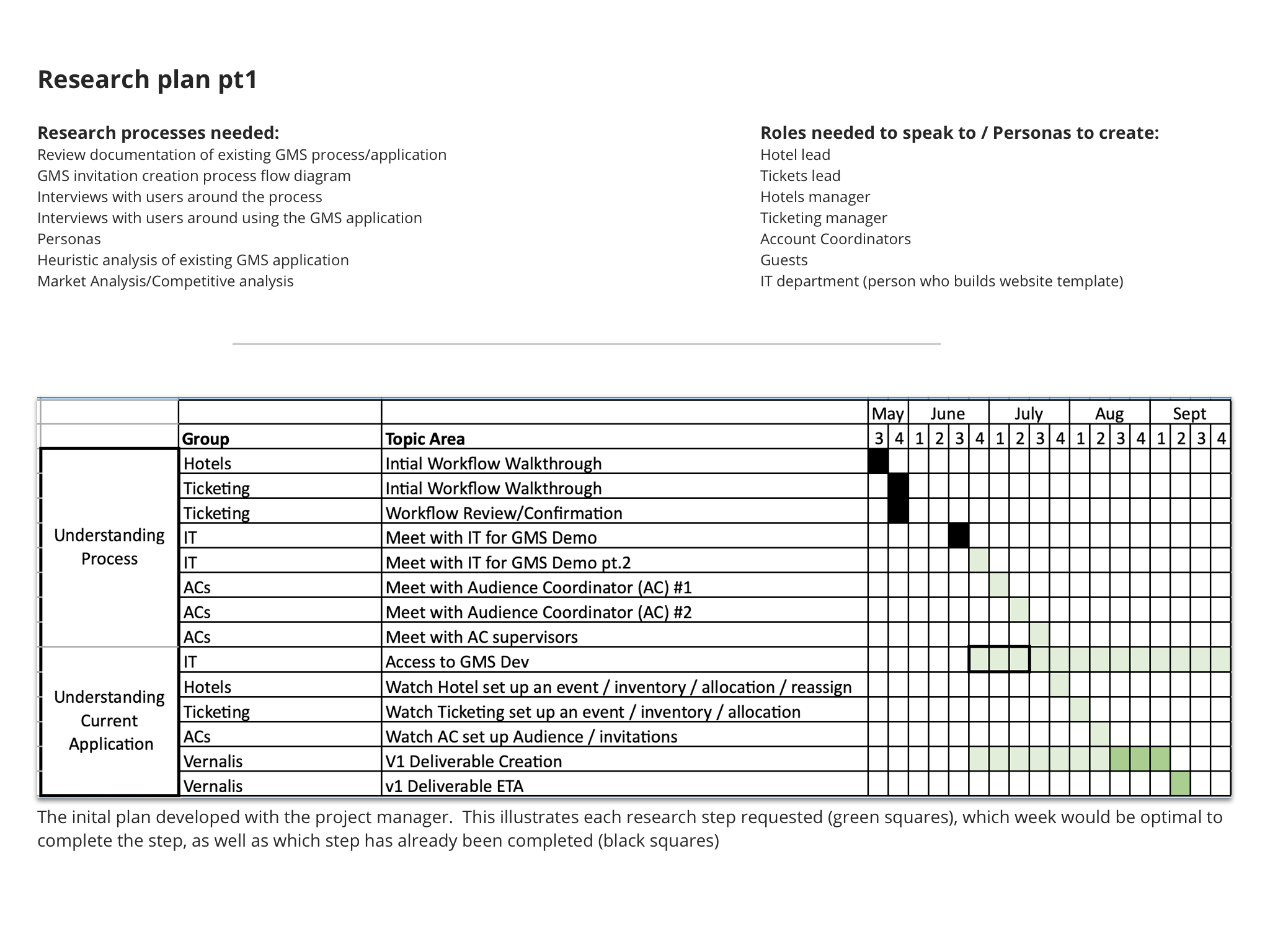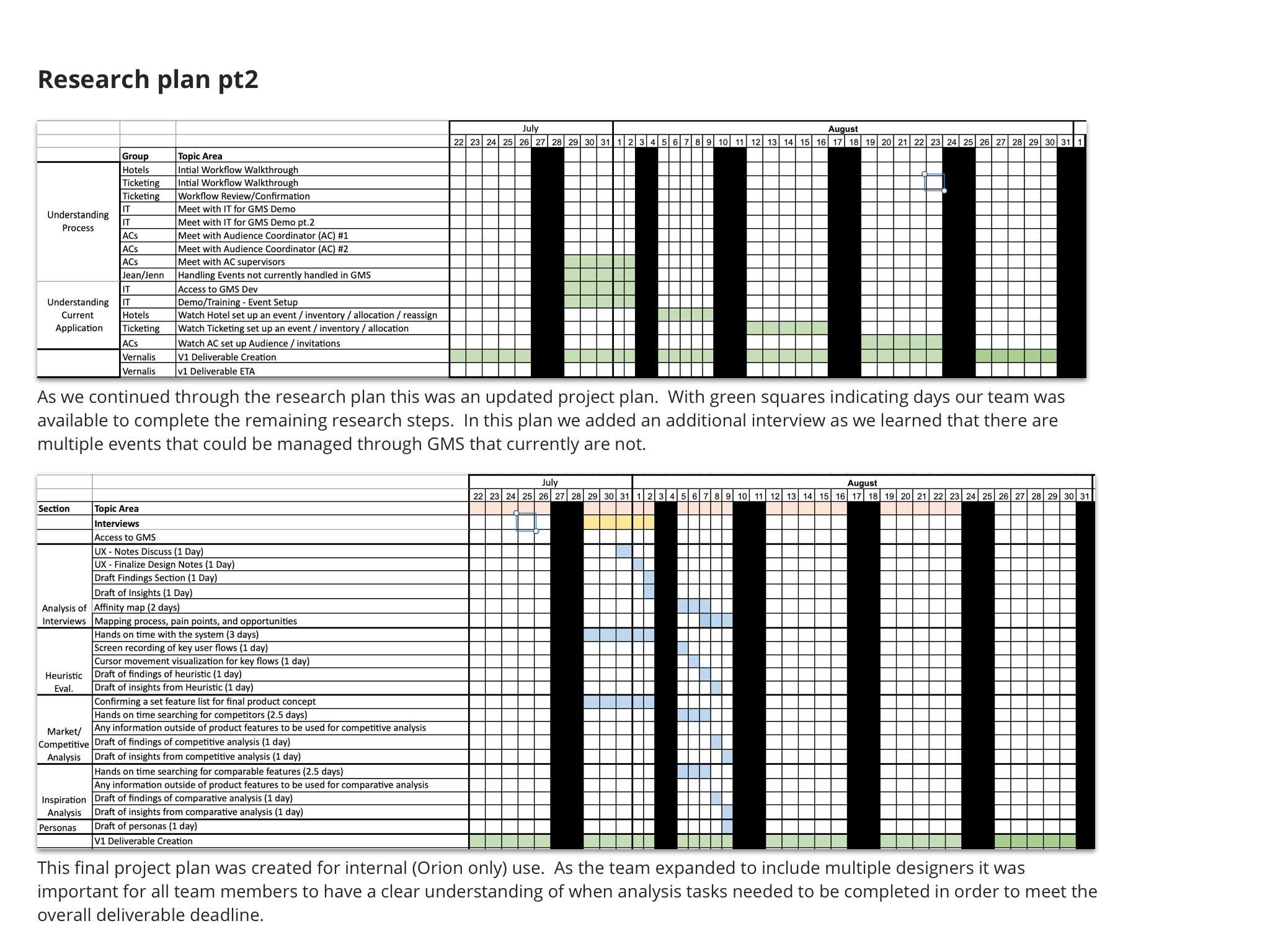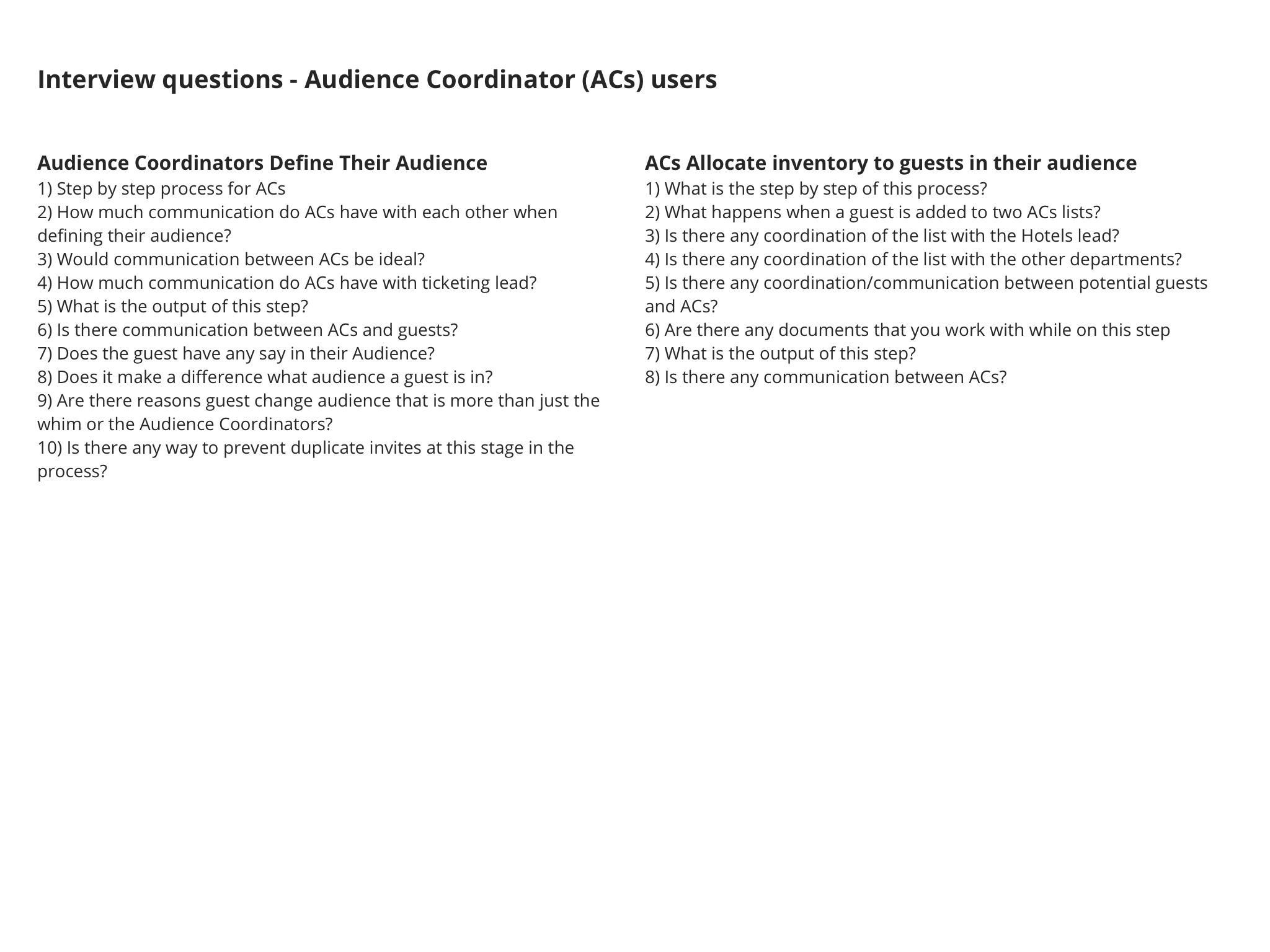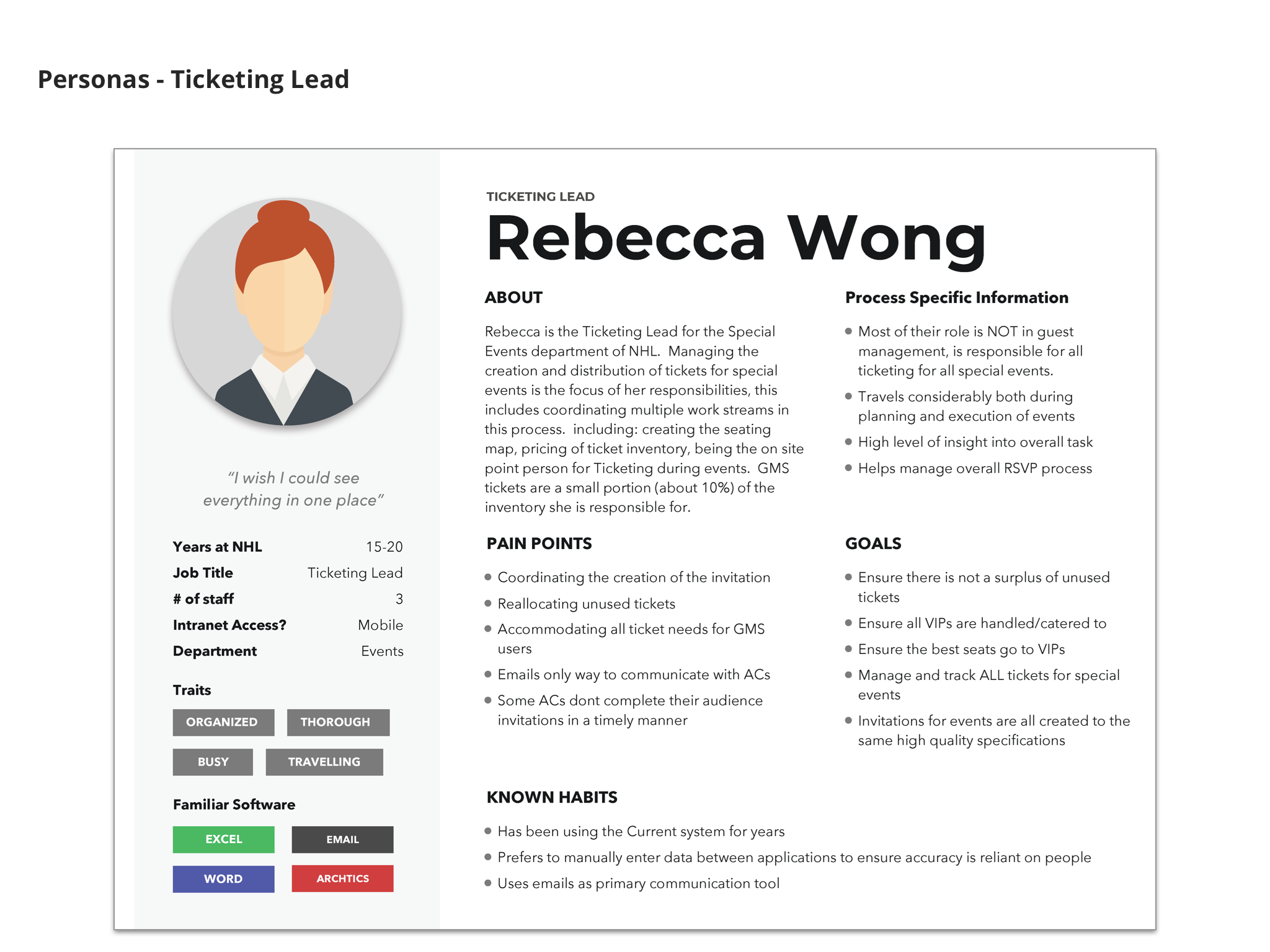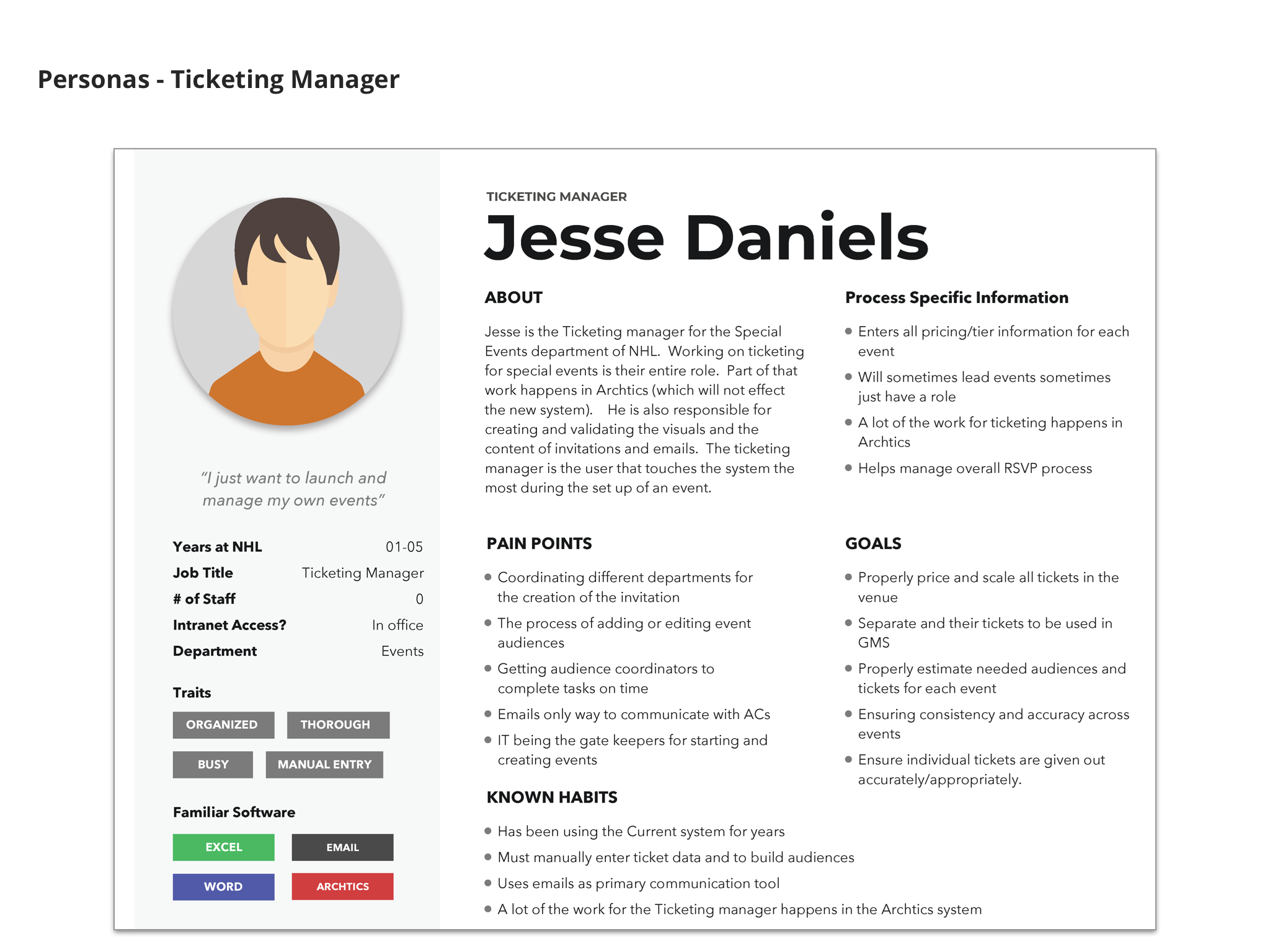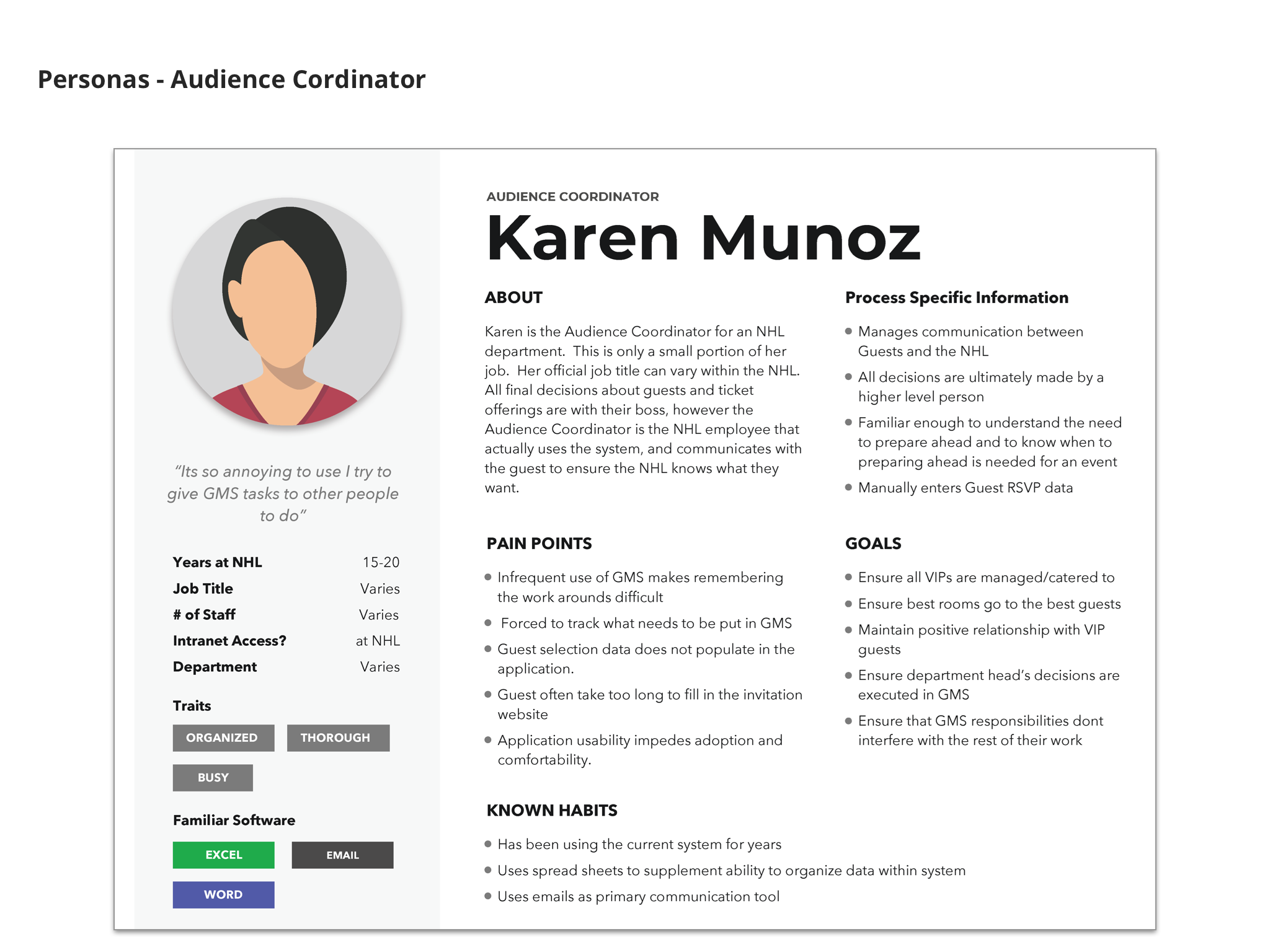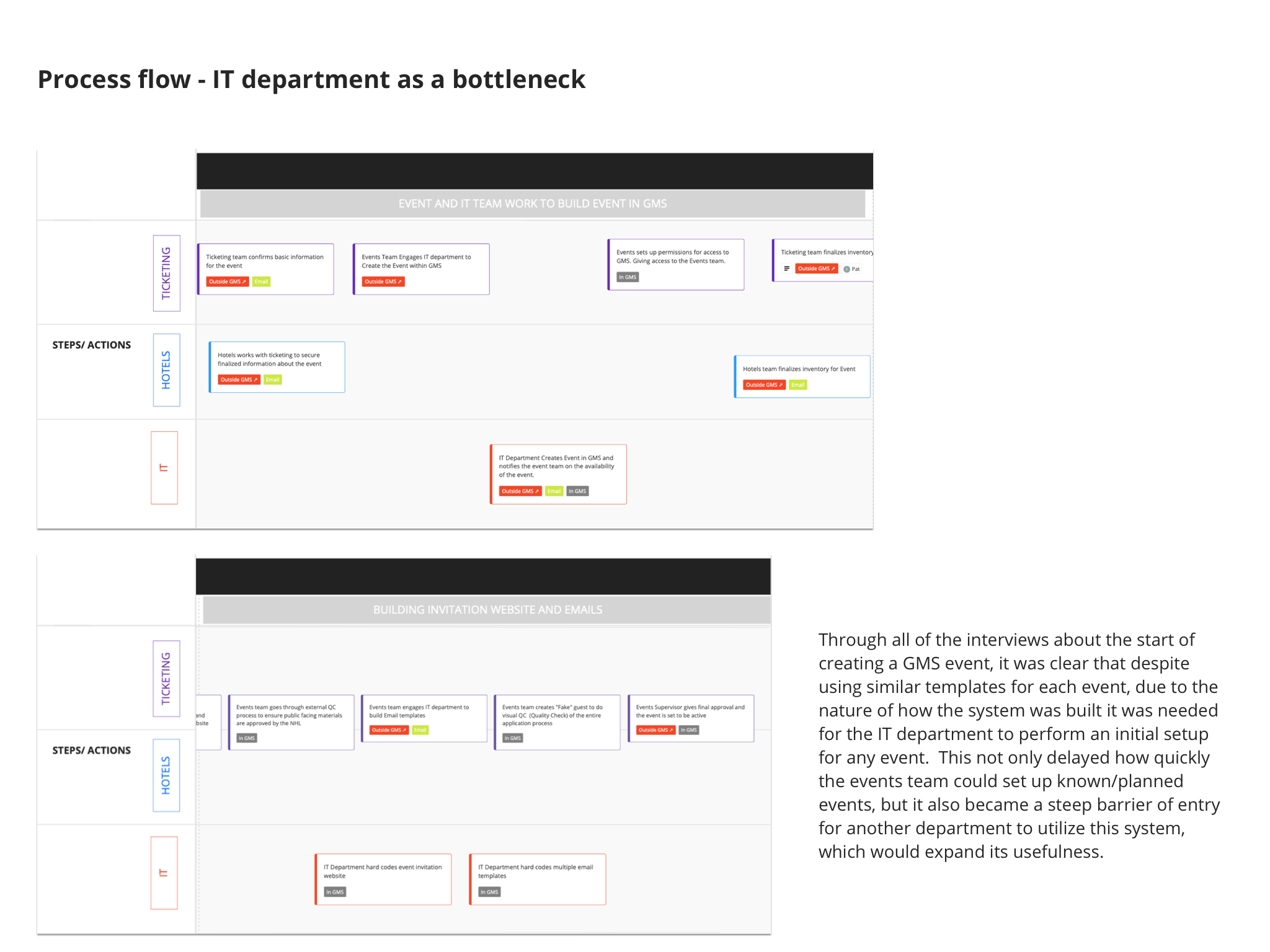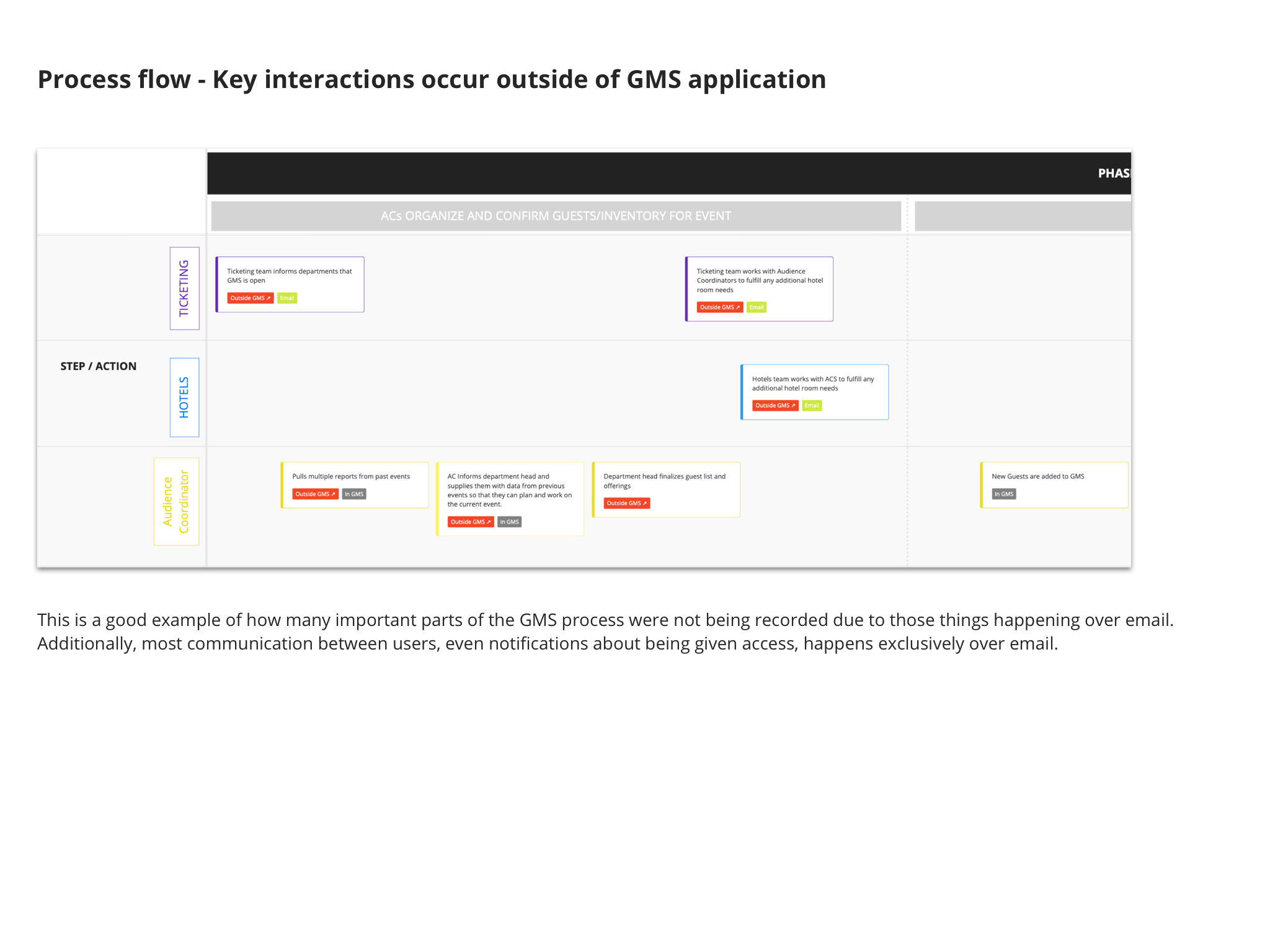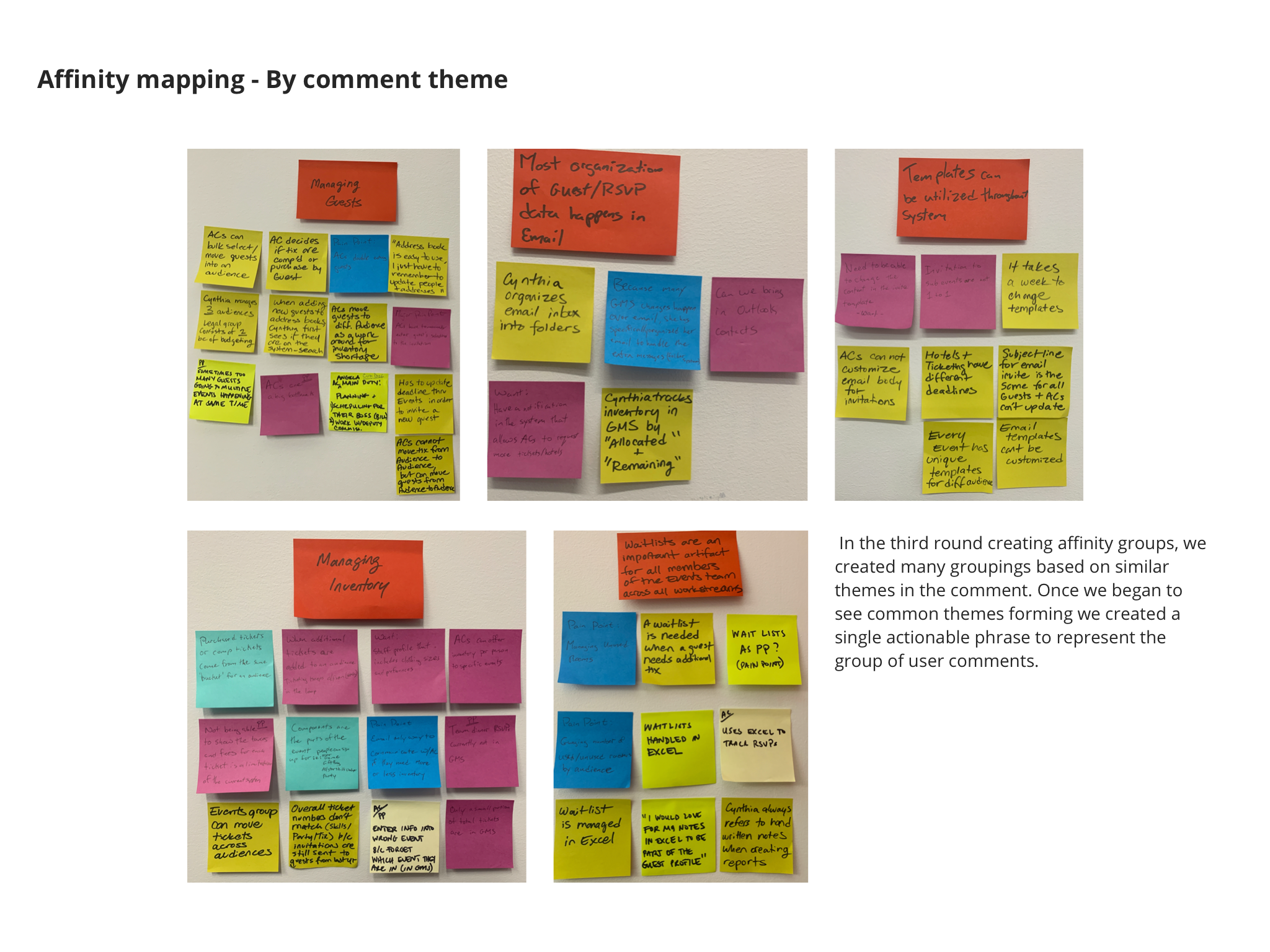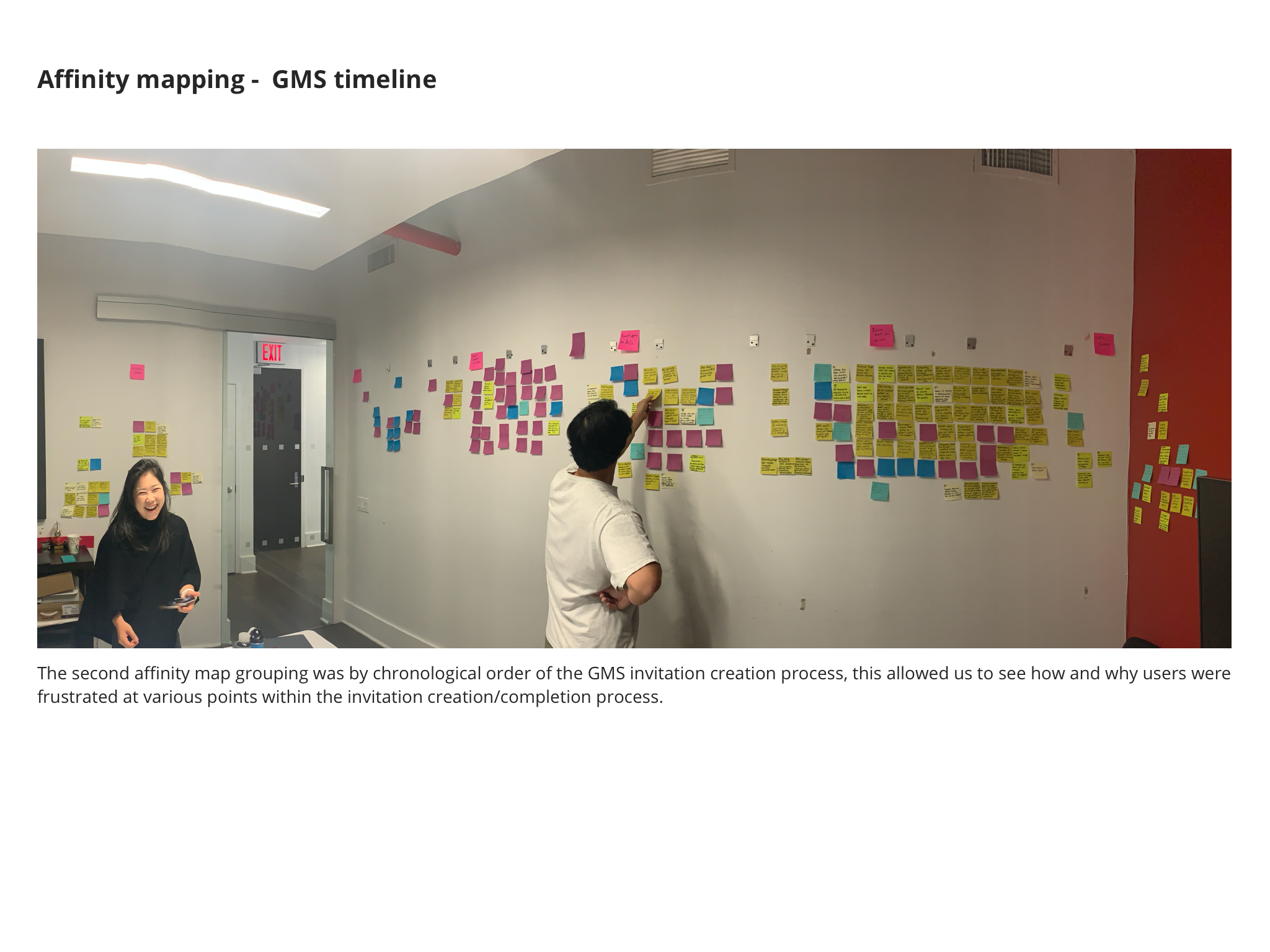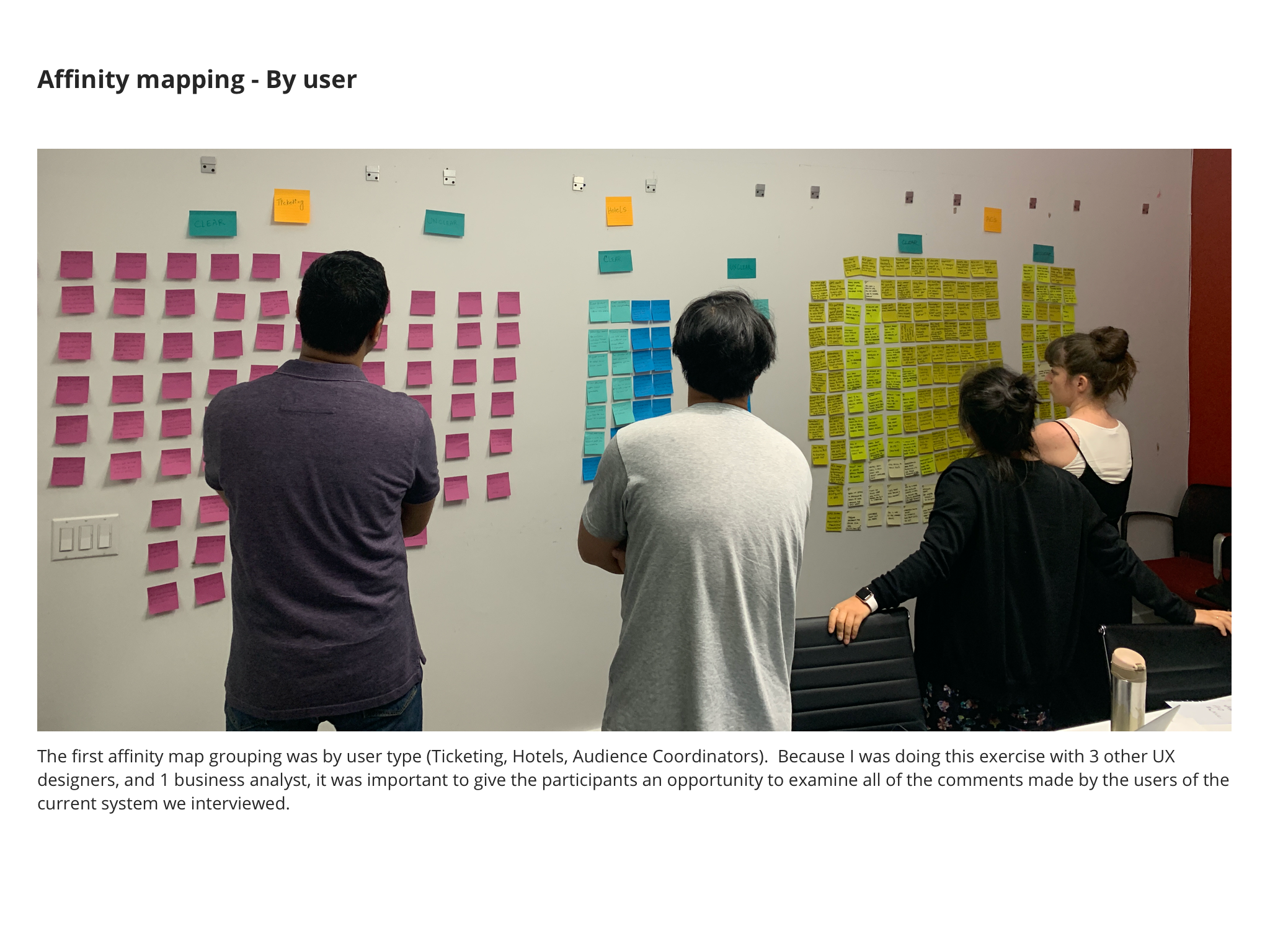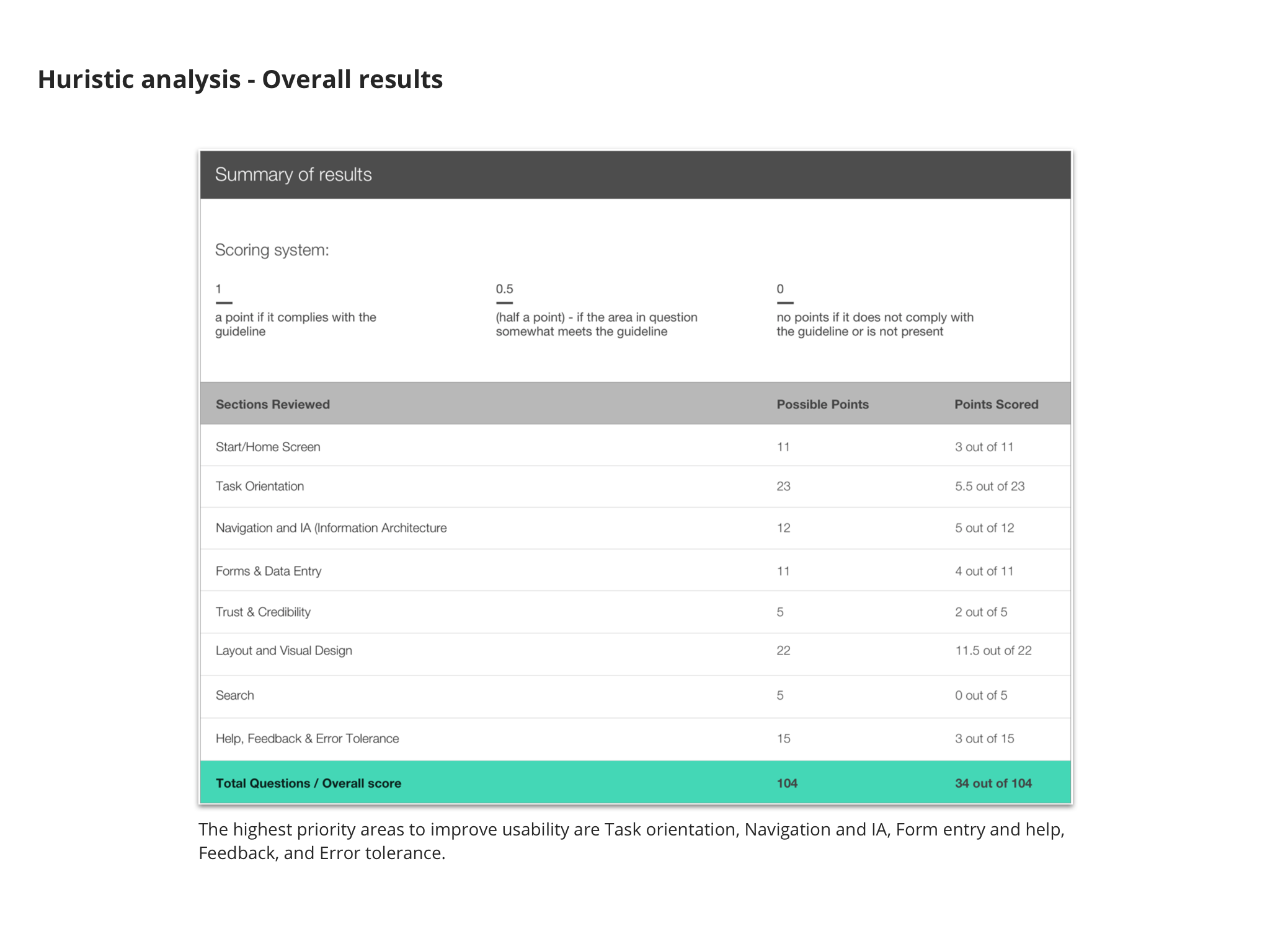Guest Management System (GMS) is a 10 year old enterprise application used for the creation and distribution tickets and accomodations for large scale NHL events (ie: Allstar weekend). The senior IT leadership at NHL, came to Orion to get an understanding of what a redesign of their current GMS application could be.
Project Details
Role
Lead Designer
Responsibilities:
Created research plan
Lead user interviews
Created affinity mapping workshop
Developed Heuristic for analysis
Worked with junior designers to refine analysis of heuristic exercise, and market analysis
Created personas
Created process flow diagrams
Project Length
4 Months
The Problem
NHL gave us some basic information to understand why they want a redesign. The current version of the tool is roughly 10 years old. It doesn’t offer much flexibility for use for a variety of events (currently it is only used for large scale league-wide events ie: Allstar game). The application’s architecture is old and has been costly to maintain over a long period of time. Lastly, the NHL thought that a new application would offer more benefits than simply updating the existing internally maintained application.
Goal
Our goal was to create a document that evaluates their current GMS application and makes a recommendation on improvements to the process and the application that can be made by modernizing the 10-year-old application.
Creating a research plan
This was a new request for the sports division of Orion, since I was the lead designer for the other sports products I was asked to create a research plan to help determine what are the problems with the current GMS process and how we can use modern web practices to achieve those improvements to the process and the application itself.
Because we were in the middle of the NHL season we were unable to get a guarantee for how much time we would have access to employees that are involved in the GMS process. Because of this my research plan became based on the tasks that needed to occur rather than an arbitrary time schedule. I wanted to make it clear that we needed access to users of the application as well as access to the application itself before we could responsibly make informed suggestions for the redesigned application.
Interviews
Because the NHL was open to completely reimagining how the GMS system worked both in the process as well as the application itself, it was important to have a good understanding of the process and the application. So a key first step was to interview each type of user (Ticketing, Hotels, Audience Coordinators) as these three groups are critical in creating and sharing the special events invitations. For each type of user, after reading through initial documentation from NHL for their process and application, I created a list of initial questions for each user that would be critical to have enough understanding to reimagine the process and the application.
Personas
As I saw how distinct each user group was, I thought it was important to create personas to represent each of the types of users of GMS. Each user contributes very different functions in the overall special events invitations process and personas for each would help illustrate that. For each user interview, along with the initial questions to understand the special events process, I also asked general questions about demographics and their job duties. From these sets of interviews I was able to create personas for each type of user we interviewed.
Interview analysis
The interview analysis was a key component to the research plan. It allowed us to create 3 separate artifacts.
Process diagram
By taking all of the interview notes from all 3 user types for GMS we were able to create a single process flow that included the hotels team, the ticketing team, the audience coordinators, and the IT department, and place it all on one timeline. Doing this allowed me to illustrate several problems with the overall process that I thought could be improved by redesigning the GMS application into a modern web application.
Affinity mapping exercise
Once we had a basic understanding of the entirety of the GMS process, it was time to move on to how the current users felt about that process. With the assistance of 2 other designers we created 3 rounds of affinity maps. The First was by user. By doing this we also began to surface the specific pain points as well as suggestions for changes or comments that suggest a particular feature that would be useful. The Second was to organize it along the general timeline of the GMS invitation creation and completion process. The third grouping we just decided to take any similar themes of the comments from the users and group them together. Doing this allowed us consolidate problems/concerns/suggestions into an actionable piece of data. I liked doing it this way because it allows us to check what the eventual solution will be down to the individual comments made by users in interviews, not just our interpretation of their comments.
Combining process pain points and opportunities
Finally by combining the previous two it allowed us to create a document that maps the pain points, suggested opportunities for improvement, and existing workarounds onto the Process flow that shows the entire Special events invitation process, what happens within the application and what happens outside of the existing application. Doing this allowed us to illustrate how the pain points and frustrations of one type of user were connected (or often a similar issue) to pain points and frustration for another type of user later on in the process.
Heuristic analysis
Once we talked to users to get an understanding of the process both outside of and within the application (as well as hopefully get a peek of how they use the application). The next step was to get a greater understanding of the actual application with a hands-on Heuristic analysis. (At this point in the project, I was able to work with another designer on this Heuristic analysis)
The results of the heuristic evaluation have confirmed many of the assumptions as to why the application needs to be reimagined. Most of the areas of the application’s usability that are rated low are simply a symptom of the application’s age and of features being added piecemeal to a legacy application. Within the eight heuristic guidelines, the highest priority areas to improve usability are: Task Orientation, Navigation and IA, Form Entry and Help, Feedback and Error Tolerance. Improvement and attention to detail in these areas will result in a superior application.
Market analysis
Once we have an understanding of the application itself (through the heuristic), and understanding of the Special event guest management process from beginning to end, as well as what works and what are the pain points of the process and the application from the 3 main types of users we are then ready to get to the speculative work of what the new application could be.
In order to speculate on what a new application could be it is important to understand what is already out there. So the next step was to complete a market analysis of what applications already exist that could satisfy some or all of the needs of the NHL.
Project, interrupted…
As our team was getting to the point of creating the final research deliverable, the project was cut short due to a redistribution of resources, as well as shifting priorities for the NHL.
Remaining tasks:
Find features of existing SaaS products that would be useful for GMS
Work with visual designer to create a few infographics to illustrate key findings for the final report
Create a presentation based on the full report. This presentation is to be used by IT the executives while pitching the redesign to other NHL executives.
Optional suggested tasks:
Interview guest users (recipients of the invitations created)
Feature inspiration analysis
Interview additional hotels staff members
Additional observations of users completing tasks in existing application.
Creating early speculative wireframes based on solving pain points and usability issues. This will exemplify the types of changes the team was imagining for the application

